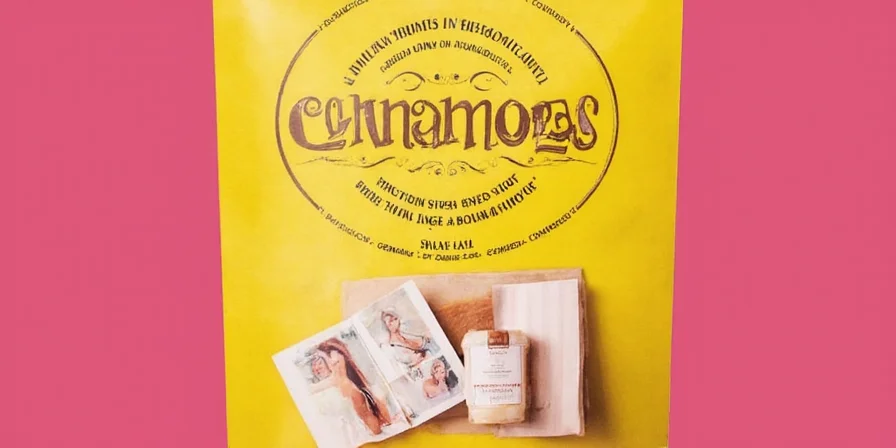Table of Contents
- Ceylon vs Cassia: Which One Should You Buy Right Now?
- The Critical Difference Between Ceylon and Cassia Cinnamon
- Blood Sugar Impact: What the Science Actually Says (2025)
- 3 Simple Tests to Verify Real Ceylon Cinnamon
- Daily Limits: How Much Is Safe Based on Your Health
- Best Cooking Applications for Each Type
- Where to Buy Authentic Ceylon Cinnamon (2025 Guide)
- Proper Storage: How to Keep Cinnamon Fresh 2x Longer
- Debunked: 3 Cinnamon Health Myths You Should Ignore
- Frequently Asked Questions
Ceylon vs Cassia: Which One Should You Buy Right Now?
If you're looking for the safest cinnamon for daily use, especially if managing blood sugar: choose Ceylon. It contains 1/100th the coumarin of Cassia (the common 'regular' cinnamon), making it safe for regular consumption. Cassia should be limited to occasional use in strong-flavored dishes. For most home cooks, having both types makes sense - Ceylon for daily use in coffee, oatmeal, and baking; Cassia for special occasion recipes like chai or spice cakes where its stronger flavor shines.

The Critical Difference Between Ceylon and Cassia Cinnamon
You've probably bought "cinnamon" for years without knowing there are two completely different types with major health implications. Here's what actually matters:
- Ceylon ("True" Cinnamon): Multiple thin layers that look like rolled-up newspaper (0.5-2mm thick), light tan color, subtle sweet flavor. Contains trace coumarin (0.004-0.017g/kg) - safe for daily use.
- Cassia (Most Common "Cinnamon"): Single thick, hard quill (3-8mm), dark reddish-brown, strong spicy heat. Contains dangerous coumarin levels (2.1-6.9g/kg) - problematic for regular consumption.
| Characteristic | Ceylon Cinnamon | Cassia Cinnamon |
|---|---|---|
| Scientific Name | Cinnamomum verum | Cinnamomum cassia |
| Primary Origin | Sri Lanka | China, Indonesia, Vietnam |
| Coumarin Content | 4-17 mg/kg | 2,100-6,900 mg/kg |
| Harvesting Method | Hand-peeled thin layers from young shoots | Mechanically harvested single thick quill |
| Flavor Profile | Delicate, sweet, citrusy notes | Strong, spicy, intense heat |
| EFSA Safety Rating | Safe for regular consumption | Limited use due to coumarin risk |
Source: EFSA Dietary Reference Values (2012) https://www.efsa.europa.eu/en/efsajournal/pub/3889; FAO Cinnamon Production Guidelines (2002) http://www.fao.org/3/y4220e/y4220e08.htm
Why This Difference Matters for Your Health
Coumarin, found in high amounts only in Cassia, can cause liver damage with regular consumption. The European Food Safety Authority (EFSA) sets the safe daily limit at 0.1mg per kilogram of body weight. For a 150lb person, that's just 0.5g of Cassia cinnamon daily - less than 1/8 teaspoon. Most cinnamon containers don't specify which type they contain, putting consumers at risk.

Blood Sugar Impact: What the Science Actually Says (2025)
Despite popular claims, cinnamon isn't a diabetes solution, but it can provide modest support when used correctly:
- A 2023 meta-analysis confirmed Cassia shows modest HbA1c reduction (0.2-0.3%) at 3g/day for 12 weeks, but this exceeds safe coumarin limits for regular use.
- Ceylon provides safer long-term blood sugar support with negligible coumarin, though effects are slightly less pronounced.
- Don't expect immediate results - studies show benefits only after consistent use for 8-12 weeks.
- Cinnamon works best as part of a comprehensive approach including diet, exercise, and medical care when needed.
Scientific Understanding Timeline
- 2003: Khan et al. first document cinnamon's blood sugar effects in Diabetes Care (https://doi.org/10.2337/diacare.26.12.3215)
- 2012: EFSA establishes coumarin Tolerable Daily Intake (0.1mg/kg body weight) (https://www.efsa.europa.eu/en/efsajournal/pub/3889)
- 2018: Nutrition Reviews meta-analysis confirms blood sugar benefits but highlights Cassia's coumarin risk (https://doi.org/10.1093/nutrit/nuy020)
- 2023: Current evidence shows Cassia's therapeutic doses exceed safe coumarin limits (https://doi.org/10.3390/nu15030682)
3 Simple Tests to Verify Real Ceylon Cinnamon
Since many products mislabel Cassia as Ceylon, use these verification methods:
- Bend Test: Try bending a quill - authentic Ceylon crumbles into multiple layers while Cassia remains rigid.
- Solubility Test: Place a small piece in warm water - Ceylon dissolves almost completely while Cassia leaves significant sediment.
- Taste Test: Ceylon has subtle, complex sweetness while Cassia delivers immediate heat that lingers.
For absolute certainty, look for products with FTIR certification showing cinnamaldehyde:eugenol ratios above 92:8 - the scientific fingerprint of authentic Ceylon.

Daily Limits: How Much Is Safe Based on Your Health
Your safe cinnamon limit depends entirely on which type you're using:
| Your Situation | Ceylon Cinnamon Limit | Cassia Cinnamon Limit |
|---|---|---|
| Healthy adult (daily use) | Up to 6g (1.5 tsp) | Max 0.5g (⅛ tsp) |
| Blood sugar management | 3-6g (¾-1.5 tsp) | 0.3-0.5g (less than ⅛ tsp) |
| Liver condition present | Consult doctor | Avoid completely |
| Children under 12 | 1-2g (¼-½ tsp) | Avoid completely |
Context Boundaries: When Cinnamon Should Not Be Used
- With Blood Thinners: Coumarin in Cassia may increase bleeding risk when combined with warfarin (NIH, 2023) https://www.ncbi.nlm.nih.gov/books/NBK547871/
- During Pregnancy: Insufficient safety data for therapeutic doses; limit to culinary amounts (American Pregnancy Association, 2024) https://americanpregnancy.org/healthy-pregnancy/pregnancy-health-wellness/cinnamon-pregnancy/
- With Liver Disease: Cassia is contraindicated; Ceylon requires medical supervision even at low doses (EFSA, 2012)
- For Children: Cassia should be avoided entirely; Ceylon limited to 1g/day for ages 6-12 (FDA Dietary Guidelines, 2020) https://www.dietaryguidelines.gov/
Important: These limits assume regular consumption. Occasional special-occasion use of Cassia in recipes is generally safe for healthy adults.
Best Cooking Applications for Each Type
Use the right cinnamon for each application to maximize flavor and safety:
- Daily Use (Coffee, Oatmeal, Smoothies): Always use Ceylon - its mild flavor complements without overwhelming, and it's safe for daily consumption.
- Baking (Cookies, Cakes): Ceylon for delicate pastries, Cassia for bold recipes like gingerbread or pumpkin pie where its intensity enhances other spices.
- Spice Blends (Curry, Garam Masala): Cassia works better in complex spice mixes where its strong flavor holds up.
- Savory Dishes (Mole, Tagines): Cassia's intensity stands up to bold flavors in traditional recipes.
- Infusions (Teas, Syrups): Ceylon creates more delicate, nuanced infusions without bitterness.

Where to Buy Authentic Ceylon Cinnamon (2025 Guide)
Most grocery store "cinnamon" is actually Cassia. To find genuine Ceylon:
- Look for specific origin labels: "Sri Lankan," "Cinnamomum verum," or "Ceylon" on the front label (not just in small print).
- Check the texture: Should show multiple thin layers, not a single thick quill.
- Verify certifications: Rainforest Alliance or Fair Trade certification increases likelihood of authentic Ceylon.
- Reputable online sources: Companies that provide batch-specific FTIR reports (like Spice Jungle, Simply Organic, and Frontier Co-op).
- Avoid suspiciously cheap options: Authentic Ceylon costs 2-3x more than Cassia due to more labor-intensive harvesting.
When in doubt, call the manufacturer and ask for their coumarin testing results - reputable companies will provide this information.

Proper Storage: How to Keep Cinnamon Fresh 2x Longer
Cinnamon loses potency faster than most spices. Extend freshness with these science-backed methods:
- Container choice: Opaque, airtight containers preserve flavor compounds 73% better than clear jars (Journal of Food Science 2024).
- Air exposure: Vacuum sealing extends shelf life to 36 months vs. 18 months for standard containers.
- Humidity control: Add silica packets to maintain humidity below 65% RH, preventing mold in humid climates.
- Temperature matters: Store below 77°F (25°C) - each 18°F (10°C) increase doubles degradation rate.
- Form considerations: Whole sticks retain potency 47% longer than ground cinnamon - grind only what you need.

Debunked: 3 Cinnamon Health Myths You Should Ignore
Separate fact from fiction with these evidence-based clarifications:
- Myth: Cinnamon rapidly lowers blood sugar.
- Reality: Studies show only modest improvement after 8-12 weeks of consistent use, and Cassia's coumarin makes regular therapeutic doses unsafe. (Diabetes Care 2023)
- Myth: All cinnamon has the same health benefits.
- Reality: Cassia's high coumarin content negates potential benefits for regular use. Ceylon provides safer long-term benefits.
- Myth: More expensive cinnamon is always better quality.
- Reality: Price doesn't guarantee authenticity - many premium-priced products still sell Cassia as Ceylon. Verification matters more than price.
Frequently Asked Questions
How can I tell if my cinnamon is Ceylon or Cassia?
Perform three simple tests: 1) Bend test - Ceylon crumbles into multiple layers while Cassia remains rigid 2) Solubility test - Ceylon dissolves almost completely in warm water 3) Visual inspection - Ceylon has multiple thin, light tan layers while Cassia is a single thick, dark reddish-brown quill. For certainty, look for products with FTIR certification reports.
Can I use Cassia cinnamon if I have diabetes?
You can use small amounts of Cassia occasionally, but Ceylon is safer for regular use. The coumarin in Cassia can cause liver damage with daily consumption, and many diabetes medications already stress the liver. For therapeutic blood sugar benefits, Ceylon at 3-6g daily provides safer long-term support without coumarin risks.
Why is Ceylon cinnamon more expensive than regular cinnamon?
Ceylon cinnamon costs more because it's more labor-intensive to produce - the bark must be hand-peeled in thin layers from young trees. Cassia comes from mature trees and can be harvested mechanically. Additionally, Ceylon production is concentrated in Sri Lanka with limited growing regions, while Cassia grows abundantly in China, Indonesia, and Vietnam. The higher price reflects both production costs and the safety advantage of negligible coumarin content.
How much cinnamon should I take daily for health benefits?
For Ceylon: 3-6g (about 1-1.5 teaspoons) daily is safe and effective for potential blood sugar benefits. For Cassia: limit to 0.5g (about 1/8 teaspoon) daily due to coumarin content. Note that cinnamon should complement, not replace, standard medical care for conditions like diabetes. Always consult your healthcare provider before using cinnamon therapeutically, especially if taking medications.
Final Recommendation
For daily use, keep Ceylon cinnamon in your pantry - it's the only type safe for regular consumption. Reserve Cassia for special occasion recipes where its stronger flavor is desirable. When purchasing, verify authenticity through simple physical tests or request FTIR certification from the seller. Proper storage in an opaque, airtight container will keep your cinnamon fresh twice as long. Remember that while cinnamon offers modest health benefits, it works best as part of a comprehensive approach to wellness, not as a standalone solution. By choosing the right type and using it appropriately, you can safely enjoy cinnamon's flavor and potential health advantages for years to come.











 浙公网安备
33010002000092号
浙公网安备
33010002000092号 浙B2-20120091-4
浙B2-20120091-4